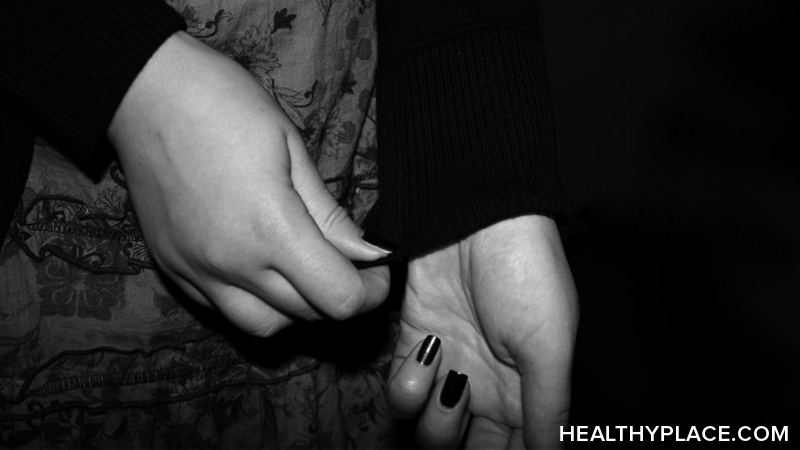Self Injury, Self Mutilation Warning Signs and Symptoms

Self-injury signs and symptoms usually aren't easy to spot. Why? Because people who self-injure become very adept at hiding self-harm scars or explaining them away. To spot the signs of self-harm, consider if the person has:
- a preference for wearing concealing clothing at all times (e.g. long sleeves in hot weather)
- avoidance of situations where more revealing clothing might be expected (e.g. unexplained refusal to go to a party)
- unusually frequent complaints of accidental injury (e.g. a cat owner who frequently has scratches on their arms)
(Not familiar with self-harm? Read: What is Self-Injury, Self-Harm, Self-Mutilation?)
Apparent Self Harm Symptoms
There are different ways to self-harm. Look for questionable and numerous scars, symptoms of self-harm, that can't be easily explained away.
- scars from cutting or burning
- broken bones or bruises from banging or punching
- sharp objects, like razor blades or other instruments used to self injure
As a group, many involved in self-mutilation are girls, although boys do it too. Wendy Lader, Ph.D. and clinical director for SAFE Alternatives, a self-injury treatment program, says self-mutilation is an accepted part of the "Goth" culture. Just because a child is involved in the Goth culture though, it doesn't necessarily mean they self-injure. However, Dr. Lader notes kids involved in the Goth movement are looking for acceptance in an alternative culture. And, she adds that self-injury is definitely a coping strategy for unhappy kids.
It's also not unusual for teenagers with an eating disorder, like anorexia or bulimia, to be involved with self-injury. Having a history of physical abuse, sexual abuse or psychological abuse is also a risk factor for self-harm behavior. Many are sensitive, perfectionists, overachievers, according to Dr. Lader. She says the self-injury starts out as a defense mechanism against what's happening in their family or in their life and then becomes a method to gain control.
These self-injury quotes may provide further insight into what's behind self-injurious behavior. Also, keep in mind, teens aren't the only ones who self-injure. Adults self-harm too.
Self-Mutilation Symptom of Other Psychiatric Disorder
Self-mutilation could also be a symptom of another mental health problem. Bipolar disorder, borderline personality disorder, and severe anxiety include the symptom of self-injury. (More details: Causes of Self-Injury)
Types of Self-Harm
The most common forms of self-harm are cutting the arms, hands, and legs, and less commonly the face, abdomen, breasts and even genitals. Some people burn or scald themselves, others inflict blows on their bodies, or bang themselves against something.
Other forms of self-harm include scratching, picking, biting, scraping and occasionally inserting sharp objects under the skin or into body orifices, and swallowing sharp objects or harmful substances.
Common forms of self-injury that rarely reach medical attention include people pulling out their own hair and eyelashes, and scrubbing themselves so hard they break the skin (sometimes using cleaners such as bleach).
Additional forms of self-harm may include:
- carving
- branding
- marking
- biting
- headbanging
- bruising
- hitting
- tattooing
- excessive body piercing
APA Reference
Gluck, S.
(2021, December 15). Self Injury, Self Mutilation Warning Signs and Symptoms, HealthyPlace. Retrieved
on 2025, January 24 from https://www.healthyplace.com/abuse/self-injury/self-injury-self-mutilation-warning-signs-and-symptoms



